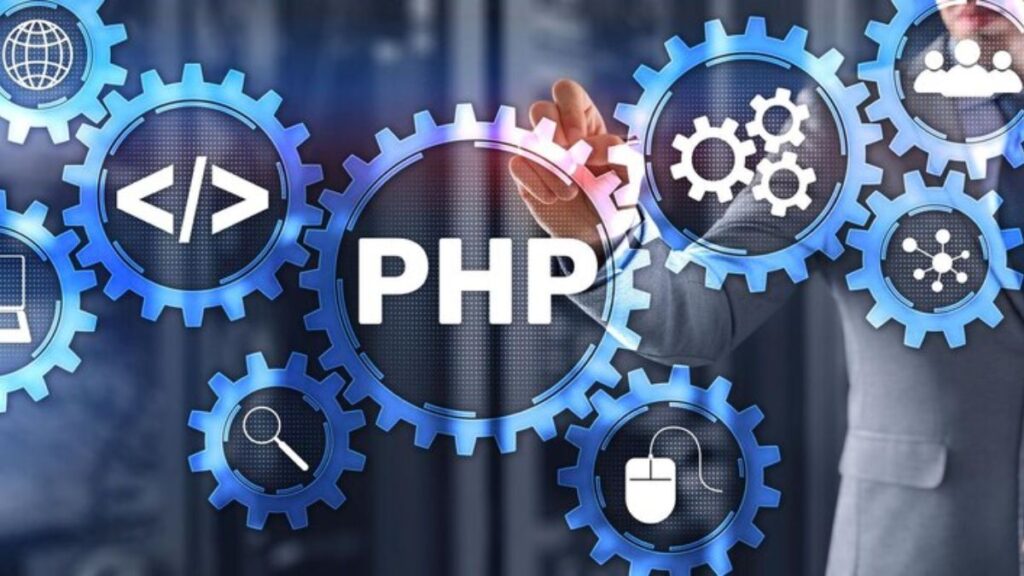Web portals have become a fundamental part of modern online ecosystems, providing users with a streamlined interface to access diverse services, information, and applications. These portals serve as the digital gateway between users and the various features offered by a website, from managing accounts to integrating third-party services. One of the most commonly encountered scripts in portal development is “/portal.php,” a PHP-based file that plays a crucial role in building and managing web portals.
In this article, we will explore the concept of web portals, the role of PHP (Hypertext Preprocessor) in their creation, and how the “/portal.php” script fits into this framework. We’ll discuss best practices for developing a modern, secure, and user-friendly portal page, including insights into trends that will shape the future of portal development. Along the way, we’ll also highlight practical examples of portal development, using specific PHP tools and frameworks.
What is a Web Portal?
A web portal is a specially designed website that brings together information from multiple sources, offering it in a unified user interface. Portals are typically used for various purposes, such as:
- Providing access to applications: Portals often integrate several third-party applications, allowing users to access multiple services through one platform.
- Managing content: Users can interact with content, such as documents, media, or reports, in a controlled and organized environment.
- Facilitating collaboration: Web portals are commonly used for internal communication and collaboration in enterprises, making it easier for employees to share information.
Given their complexity, web portals must be well-architected to ensure they are user-friendly, scalable, and secure. They act as a central hub, connecting users with services and applications while maintaining smooth functionality across devices.
The Role of PHP in Web Portal Development: /portal.php
PHP is one of the most popular server-side scripting languages used to build dynamic and interactive websites, including web portals. Its versatility, open-source nature, and strong community support make it an ideal choice for developers. The language’s ability to connect to databases and handle server-side logic is critical when developing portals that manage user data, authenticate logins, and integrate with external APIs.
PHP’s compatibility with several content management systems (CMS) like WordPress, Joomla, and Drupal means that developers can easily integrate web portals into existing website infrastructures. Moreover, PHP frameworks such as Laravel and Symfony provide a structured way to develop more complex portals with built-in tools for authentication, routing, and error handling.
Key Features of PHP in Portal Development: /portal.php
- Database Integration: PHP’s strong support for databases such as MySQL and PostgreSQL allows developers to create portals that can store, retrieve, and manage large volumes of user data.
- User Authentication and Authorization: PHP frameworks include tools for implementing secure login systems, session handling, and access controls, making it easier to manage different levels of user access.
- Scalability: PHP portals can easily scale as the user base grows. By employing best practices, such as caching, load balancing, and asynchronous processing, PHP developers can build portals capable of handling large amounts of traffic.
- Cross-platform Compatibility: PHP works across multiple platforms, such as Linux, Windows, and macOS, ensuring that portals can be hosted in different environments without major modifications.
- API Integration: Portals built with PHP can integrate with external APIs, such as payment gateways, social media logins, and cloud services, which are essential for creating feature-rich user experiences.
The Significance of the /portal.php File in Web Development
The “/portal.php” file refers to a specific PHP script that forms the backbone of a web portal’s functionality. In many instances, the file is responsible for managing user sessions, handling authentication, serving content, and facilitating interactions between the user and the database. While the exact role of “/portal.php” can vary depending on the project’s architecture, it typically handles core portal operations such as:
- User Authentication: Ensuring users can log in securely through a login page, and managing user sessions.
- Content Management: Displaying content relevant to the user, often by pulling data from a database.
- Service Integration: Connecting to third-party APIs or services that users might need to interact with.
For example, in enterprise environments, a php provider portal (such as those used by insurance companies or healthcare providers) might use a “/portal.php” script to manage user interactions with policy information, claims, or patient records.

Practical Example: A Simple PHP Provider Portal
A common use of the “/portal.php” file is in the creation of provider portals, such as a php medicare provider portal or a php tpa provider portal. These portals allow healthcare providers, third-party administrators (TPAs), or insurance carriers to log in, submit information, and access services relevant to their work.
In this example, “/portal.php” could handle:
- User Authentication: Secure login using a form that collects the provider’s username and password, validating this against a stored database of authorized users.
- Data Display: Once authenticated, the portal might show a dashboard where the user can access claims, view patient data, and interact with other insurance or medical-related functions.
- Form Submissions: Allowing the provider to submit data, such as claim details or patient records, directly through the portal, with the script validating the inputs and updating the database accordingly.
The flexibility of PHP allows for customization depending on the needs of the organization, whether it be a php bamboo portal for content management or a custom php portal login page for businesses.
Best Practices for Developing a Modern and Secure /portal.php
While PHP is a powerful tool for building portals, developers must adhere to best practices to ensure their portals are secure, efficient, and easy to use. Some best practices include:
- Input Validation and Sanitization: To protect against common attacks like SQL injection, ensure all user inputs are validated and sanitized before being processed. PHP provides built-in functions like filter_input() to help with input validation.
- Session Management: Secure session handling is critical for any web portal. Use secure cookies (httpOnly, secure flags) and proper session management techniques to prevent session hijacking.
- Encryption and HTTPS: Sensitive data, such as passwords and personal information, should be encrypted using hashing algorithms like bcrypt. Moreover, all communication between the server and client should be encrypted via HTTPS.
- Error Handling: PHP’s built-in error handling capabilities, combined with logging, help in identifying and fixing bugs efficiently without exposing sensitive information to users.
- Performance Optimization: Implement caching mechanisms to reduce load on the server and improve response times for users. Tools like PHP’s OPcache can help in speeding up portal performance.
- Access Control: Implement proper role-based access control (RBAC) to manage different levels of user permissions, ensuring that sensitive information is only accessible to authorized users.
- Database Security: Use prepared statements and parameterized queries when interacting with databases to prevent SQL injection attacks.
Emerging Trends in Web Portal Development: /portal.php
As web portals continue to evolve, several trends are shaping the future of portal development, particularly with PHP.
- Microservices Architecture: Modern portals are moving towards microservices architecture, where different components of the portal (such as user management, billing, and content delivery) are split into smaller, independently managed services. PHP’s ability to integrate with RESTful APIs makes it ideal for building microservice-based portals.
- AI Integration: Artificial intelligence is being increasingly integrated into portals to enhance user experiences. AI can be used to personalize content, provide intelligent chatbots, or automate administrative tasks, making portals more dynamic and user-friendly.
- Mobile-First Portals: With the rise of mobile usage, web portals must be mobile-friendly. Responsive design, powered by PHP’s server-side rendering, ensures that portals look great and function seamlessly on any device.
- Increased Security Focus: With data breaches becoming more common, portal developers are focusing on making portals more secure. This involves not only encryption and secure authentication but also implementing multi-factor authentication (MFA) and regular security audits.
Conclusion: /portal.php
In the ever-evolving world of web development, PHP continues to be a powerful tool for building robust, scalable, and secure web portals. The “/portal.php” file plays a crucial role in portal development, serving as the core script responsible for managing interactions between users, databases, and third-party services. Whether it’s a simple php bamboo portal for content management or a complex php medicare provider portal for healthcare providers, PHP’s flexibility ensures it can be tailored to meet the specific needs of any project.
By following best practices, leveraging PHP’s strengths, and staying abreast of emerging trends, developers can create modern, secure, and user-friendly web portals that offer valuable services to users. As the web continues to grow, tools like PHP will remain essential for developers seeking to build efficient and interactive web portals that stand the test of time.
This article covered everything from understanding the basics of a php portal login to exploring practical examples of provider portals and discussing emerging trends like microservices and AI integration. The role of the “/portal.php” file is significant in developing these portals, as it ties together the key functionalities that make a portal efficient, secure, and scalable.
With PHP’s versatile and well-supported ecosystem, developers can continue to build and refine their portal solutions to meet the ever-growing needs of the digital world. Whether you’re developing a custom php tpa provider portal or integrating a learning management system like https://www.multigraphics.in/lms-web-portal.php, PHP offers the tools to create powerful and user-friendly portals that serve users and businesses alike.









